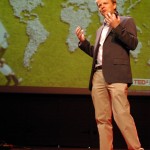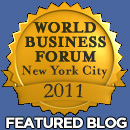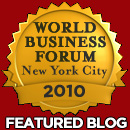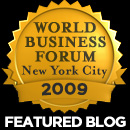Feb19
How PepsiCo, Kraft & MWH Accelerate Innovation
Point: Tools and processes — PepsiCo’s 72-hour IdeaJams, Kraft’s R&D Suite with online lab notebooks, and MWH Global’s Idea Hub — speed innovation by enabling quick access to new ideas, prior art, and company-wide participation.
Story: Innovation accelerates business growth by providing the new products, services, processes, and business models that help an organization reach new markets and new levels of organizational performance. But how can organizations accelerate innovation? Several speakers at the World Research Group‘s annual Open Innovation Summit in Orlando described ways to accelerate innovation.
Dr. John Johnson of PepsiCo described how the company uses fast-cycle IdeaJams to quickly focus the efforts of a crowd of innovators on a specific challenge and quickly generate usable ideas. Too often, innovation processes expand to fill the time available — if you only review innovation once a year, then innovation projects will take 12 months. Instead, PepsiCo’s IdeaJams are 72-hour events, well publicized in advance to gain comapny-wide participation and excitement. Employees can even participate using mobile phones to text their answers.
Many organizations, such as MWH Global (a wet infrastructure engineering services company), have knowledge workers who generate innovative ideas every day in the course of their daily tasks. But even if innovation comes fast and furious at the individual worker level, MWH found that the company-wide rate of innovation depends on the rate of spread of ideas from individual knowledge workers to broader deployment. To increase the velocity of innovation, MWH created an Idea Hub where people can post, see, vote and discuss ideas, said MWH’s Senior Innovation Specialist Kelli Shuter Cessna. To encourage participation, MWH focused on finding highly-visible “knowledge brokers” in the organization and displaying a “hot list” of the top participants.
Steve Goers, Vice President of Open Innovation, Investment Strategy, R&D and Quality at Kraft Foods talked about the flipside of generating innovation, namely using pre-existing solutions more effectively. Kraft noticed that too many innovators jump directly from idea to development without looking around inside and outside the organization to leverage pre-existing solutions. To remedy this, Kraft implemented knowledge management and open innovation processes to help find and reuse internal and external knowledge. Kraft found that reuse is faster than reinvention. When Kraft started work on its recently launched Deli Fresh line of presliced meat, it discovered a solution proposed 12 years ago that was viable now. The pre-existing solution trimmed 4 months off the product development effort. Although developers don’t want to take the time to search existing information sources, Goers said that people sometimes need to “go slow to go fast.”
Action:
- Design fast-paced innovation efforts to accelerate innovation schedules.
- Encourage the spread information across the organization to increase the velocity of adoption of new ideas.
- Encourage seeking information from across the organization (and from outside) to avoid delays in reinvention.










